In 2014 we honored:
Jesse “James” Leija (a thinking fighter who models right behavior for westside youths),
Dr. Maria Hernandez-Ferrier (first president of Texas A&M, San Antonio; committed to improving education),
Roy Orozco (a life of service),
Dr. Paul Garcia (WellMed’s first geriatrician), and
Chief Justice Alma Lopez (first Hispanic woman elected as appellate court chief justice in the United States), and
Dr. Wayne Yakes (in pursuit of excellence in medicine and the arts).
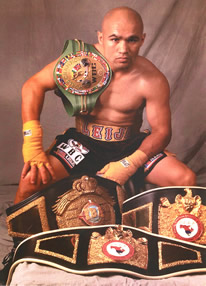
ATHLETICS
Jesse “James” Leija
A Thinking Fighter Models Right Behavior for Westside Youth
Jesse James Leija knew all of his life that he wanted to be a boxer. His dad and uncle were both good amateur boxers, and he wanted to follow in their footsteps. Instead, he turned pro, and won 2 world titles, competed in 9 world title matches, defeated 15 world title contenders and 3 Olympians, retiring with a record of 47 wins (including 19 knockouts) 7 losses and 2 draws.
His mom didn’t make it easy. Having seen Jesse James’ dad battle through a Golden Gloves career (Jesse Leija Sr. won the Texas Golden Gloves championship and was the first San Antonian to fight in the national Golden Gloves competition) and get Parkinson’s disease at the young age of 54, Connie Leija, a nurse, wanted her kids to find their careers “the right way” – graduate from high school and go to college.
Jessie James’ brother and sister, Jesse and Genevieve, followed that path, and Mrs. Leija would have preferred that James become a physical therapist. Mrs. Leija said, “I want your brains to work for you, not against you after being battered in the ring.”
Jesse James’ parents did not allow him to fight until he finished high school. It must have been torture to go to school day after day and do homework thinking the classes would not help him in the ring at all.
Jesse James was not encouraged as he came through school. At Harlandale High School, a coach told him he was too small to play football. When he started boxing, trainers told him he was too small, didn’t pack enough power, and wasn’t mean enough to box.
Jesse James responded to these discouraging words with a 16-year boxing career. His official biography credits his success to a dedication to the sport of boxing.
“He overachieved but was under appreciated for his ring skills. He was a thinking fighter, first and foremost. He carried bravery in his heart. He was substance over style, character over charisma.”
Jessie James was a hero in his Westside neighborhood. Many youngsters learned to channel their aggression through boxing.
As he worked through his career, Jesse James’ dad was always his trainer. As they faced particular fights, they would call upon some of the best trainers in the world to consult – Emanuel Steward, Ronnie Shields and Richard J. Keddie. Ronnie Shields continues to serve as Jesse James’ trainer.
Part of Jesse James’ success comes from constant conditioning. When he retired from the ring, he opened Champion Fit Boxing Gym, where he shares his knowledge and commitment with a wide range of people – from teenagers and mothers to business professionals and amateur boxers as well as professional boxers.
“I motivate my customers to get the best out of themselves – not to be the best in the world. Most of my clients do this for fitness, so I motivate them to make every day a great day,” Jesse James says. When the day doesn’t turn out as well as the student might expect, Jesse tells them not to dwell on it.
“It’s just like being in the car. The windshield is very big in front of you, but the rearview mirror is small. That’s because what is in front of you is more important than what is behind you. So keep looking forward. No matter what happened today, you can’t change it, it’s gone forever, but we still have that windshield in front of us.”
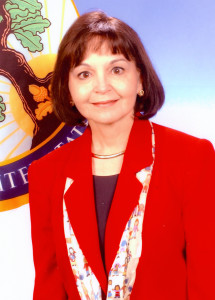
EDUCATION
Dr. Maria Hernandez-Ferrier
Texas A&M, San Antonio’s First President: Committed to Improving Education
Several of the other honorees in the National Hall of Honor class of 2014 took a traditional path to success. Dr. Maria Hernandez-Ferrier, the first president of Texas A&M San Antonio, took a more circuitous route.
Dr. Ferrier told us, “When I was growing up in the Fifties, little Mexican girls were expected to get married, have children and be a good wife and a good mom, then a good grandmother. That’s what I did, I married right out of high school. Then at the age of 30, I was divorced, a single parent with only a high school education. I couldn’t even drive a car.” Dr. Ferrier needed a job as soon as possible. Read More
Maria went to work at a center that helped children with developmental difficulties. She worked as an assistant to the center’s speech pathologist, Carol Tuell. “Carol would assess the children – many were almost non-verbal. After assessing the student, Maria would implement the program she prescribed.”
Maria was quite intelligent. As a child Gene Hernandez, her daddy, worked three jobs to put his kids through Mount Olive Lutheran School. It was a tiny school, and many of the rooms held two or three grade levels. From there, Dr. Ferrier went on to Page Middle School and then her parents intervened again. In her neighborhood, she would normally go to Lanier High School. However, in the San Antonio Independent School District, they could request any school in the district. Maria found herself at Thomas Jefferson. “Jefferson in those days was an elite college prep school. When I started going to Jefferson, for the first time in my life I realized I was poor.” Being different from the other kids did not slow her down at all. She became a soloist for the choir. “The choir gave me a home, a place that made me feel that I belonged.” After graduation, she met and married her husband and over the next dozen years they had two children.
Then she was divorced and working as an aide making minimum wage. Watching Maria work with the children, Carol Tuell started encouraging her to go to college. “I told her I wasn’t college material.” Ms. Tuell would not accept that. One day she offered, “If I pay for your first semester at San Antonio College, will you go?” Maria could not refuse. That first semester convinced Maria that she was fit for college. In those days, the early Seventies, colleges had grants available. Maria chose to follow her mentor and become a speech pathologist, attending the Harry Jersig Speech & Hearing Center at Our Lady of the Lake University. After graduating, she worked as a speech pathologist in the public schools. “I found that students with speech difficulties also had emotional problems. I was doing a lot of counseling, and I was pretty good at it,” she said.
She went back to school, earned a master’s degree in counseling and eventually a doctorate of education. President George H.W. Bush, and then President George W. Bush asked her to join the Department of Education. In that job, she toured the country to find out what was wrong with American education. She became convinced that our problems came from teacher preparation. “By and large, people graduating in education from our universities are not prepared – that’s why we lose our best and brightest in the first three to five years of their career.”
“A lot of universities have thought of themselves as ivory towers and they would tell schools and teachers how they should educate when they had never been in a classroom themselves. We will never, ever change our educational system if we do not have amazing teachers in every classroom. You’re not going to attract the best and brightest to education when teacher pay is the lowest of the professions. Especially when universities and colleges of education are at the bottom of the totem pole and faculty who teach education are the lowest paid. We really have to change our universities’ priorities.”
As president of Texas A&M San Antonio, Dr. Ferrier is changing teacher education with a Ready for Day One Degree Program. Her degree program for teachers follows “the medical model.” A&M San Antonio students work in the classroom with a master teacher for a full 18 months. Master practitioners teach with education professors. Dr. Hernandez-Ferrier is actively making a difference in American education.
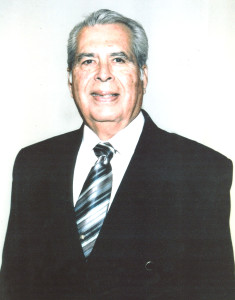
SPECIAL RECOGNITION
Roy Orozco
A Life of Service
Roy Orozco has given his entire career to service. He served in the Navy, Marines and Air Force; he worked in aviation safety and materials management at Kelly Air Force Base, and he has given countless hours of his “retirement” to investing in youth with education by keeping HSFE on the financial straight and narrow.
After attending St. Agnes School on San Antonio’s Westside, Roy considered entering the seminary to become a priest. However, St. Agnes did not have much in the way of athletic facilities, and Roy felt the call to the field. He transferred to San Antonio Tech High School, where he lettered in football, basketball and track, and played center field for Tech’s 1951 championship baseball team. Read More
After graduating from Tech, Roy attended Southwest Texas State, starting his college education with a liberal arts focus. He got a job at Kelly, and a few months later joined the Navy, serving as Aircraft Crew Chief with Fighter Squadrons 111 and 114 aboard the Aircraft Carriers U S Valley Forge (CV-45) and U S Boxer (C-V 21). After four years of Navy, Roy enlisted in the Marine Reserve, seeing action serving with the 14th Infantry Battalion. In 1960, Roy was one of 32 soldiers that marched from Gonzales to the Alamo, recreating the famous 1836 “Come and Get It” trek during the Texas war for Independence. When they arrived at the Alamo, they were greeted by many of the performers and crew.
After three years of reserve duty, Roy enlisted in the Air Force. He served the Air Force as an Airborne Radio Operator, a Flight Engineer and retired as an Air Transportation Specialist. He returned to civil service at Kelly.
Along the way, Roy studied Aviation Accident Investigation at the University of Southern California and attended the Wright Patterson AFB School of Logistics. His service at Kelly culminated in a sub-unit chief in the Engineering and Reliability Branch of the Directorate of Material Management Division. Roy’s imagination and leadership led to many suggestions for improving processes, saving the Air Force millions of dollars. He was awarded several Outstanding and Sustained Performance Awards. Kelly was known as home of C-5 cargo planes and refuelers. The C-5 saw action in nearly every conflict from Vietnam to the Middle East. Their mission was to load up and fly to all corners of the world, requiring occasional refueling. The Air Force encountered a problem with refueling the C-5s at night. The bright light used to guide the refueling attachment to the C-5 would hit the camouflaged surface and the refueling port would disappear as the light turned the camo to a ghostly grey. Roy suggested that the Air Force paint a black design surrounding the refueling port. The light guiding the refueling attachment gained depth perception and significantly improved night time refueling operations. The idea was tested in several night refueling missions before it was approved by the Strategic Air Command and the Military Airlift Command. Roy served in Vietnam as a Civil Service member of a special unit that was responsible for the recovery and repair of damaged aircraft. The unit performed missions throughout Vietnam and Thailand. Roy left the military as a disabled veteran. He retired from Civil Service with 38 years of service to his country. Roy is married to Stella. They have six children, three boys and three girls.
Roy has continued to serve with board membership since HSFE’s founding in 2006. He is our Steward of the Funds and works hard to make sure our finances are spent judiciously. With Roy’s help, HSFE has been able to steadily increase the number of scholarships we award each year. We are proud to induct Roy Orozco, one of our own, to the National Hispanic Hall of Honor.
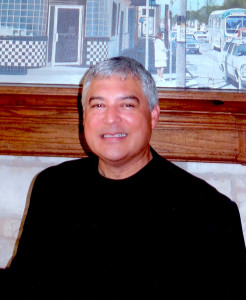
BUSINESS
Dr. Paul Garcia
WellMed’s first Geriatrician
The son of a military officer, Paul Garcia started his educational path at the Department of Defense schools in Japan. When his family returned to the United States, he continued to bounce around, attending middle school at Madison, and then moved to southern California. When his dad retired, the Garcia family came “home” to San Antonio.
Paul arrived at Thomas Jefferson High School for their first 9th grade class. “I came in with long hair and a passion for surfing,” Dr. Garcia said. “I had no concept of preparing for college.” So the young Paul was put on a vocational track, taking vocational courses. Then his life changed. His typing teacher, Mrs. Morales, perceived his academic potential and recommended that he change his focus to college prep. Read More
Paul was still not really focused on college, but one of his Mustang football teammates, Danny Garza, had a plan – he knew he wanted to be a doctor and spent much of his time studying. Paul decided that was a pretty good idea. As a senior, he and Danny had scored well on the SATs and started getting letters from colleges. Paul went to see the counselor, but she recommended vocational school, admitting she had not sent his transcripts to the other colleges.
Sometime later, Ms. Morales asked him what college he had chosen. Paul told her what the counselor said and soon thereafter, he was called to the principal’s office. The counselor came to the meeting and told him she had sent his transcripts that day. The next year, the counselor worked in a middle school.
Baylor offered a full academic scholarship, and that was the year they won the Southwest Conference title, so Paul and Danny decided to go there without visiting Waco. Once they had moved into the dorm and encountered Baylor’s rules and Waco’s lack of social activity, Paul wondered, “What the hell have I done?” He came back home and did his undergraduate work at St. Mary’s University.
After graduation, Paul attended the UT Medical School in Houston. The summer after his first year, he needed to get a job, and the only one he could find was at a nursing home. Dr. Garcia did a summer fellowship at Mount Sinai in Manhattan, working with Dr. Robert Butler, known as “the father of geriatrics.” After his internship and residency, Dr. Garcia became a geriatrician.
Geriatrics was a new specialty in those years. Dr. Garcia went to work with MacGregor, then Prudential healthcare, leading their senior services. Dr. Garcia’s division grew to 36 clinic networks serving 200,000 patients. When he heard that Prudential was getting out of medicine, Dr. Garcia planned to take a year off. Dr. George Rapier called him and said that WellMed did not have a geriatrician. Dr. Garcia was the first physician to be named a partner in WellMed that was not part of the original eight doctors that started the firm.
Dr. Garcia assumed WellMed’s long-term care patients (formerly contracted to an outside firm). WellMed continued to grow, establishing additional services to help seniors, opening in Florida and becoming one of the largest providers of senior medical services in both Texas and Florida.
In 2011, WellMed sold off some of its assets. Dr. Garcia decided to retire. Dr. Garcia’s son was a senior in high school that year and his dad wanted to spend more time with him. Dr. Rapier would not accept his letter of resignation. Dr. Garcia reduced clinical work and remains part of the management team.
“I told my parents, thank God we moved to San Antonio after San Diego because if we had stayed in California, I would probably be roaming the beach today collecting cans to buy a bottle of Boone’s Farm. College and the future just weren’t on my radar.”
A typing teacher and a teammate encouraged him to think differently. Paul Garcia found himself in honors courses, set on a path to medicine. “People put me where I went because of my aptitude, I guess.” It sure beats collecting cans on the beach.
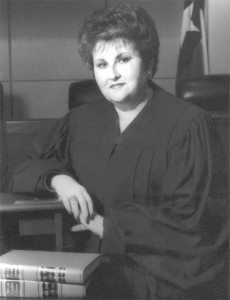
PUBLIC SERVICE
Chief Justice Alma L. Lopez
The First Hispanic Woman elected as Chief Justice to an Appellate Court in the United States
Alejandro and Olivia López moved from Corpus Christi to San Antonio with three little girls in tow. They settled in a neighborhood that did not have any other Hispanics and no one that spoke Spanish. The three López sisters lived next door to three sisters of about the same age, but the neighboring parents would not allow the girls to play with the López girls. Read More
But Alma López had already shown signs of her future – at age 5, her grandmother noticed – and remarked – that Alma was a good arbiter and mediator. When they started Graebner Elementary, Alma and her sisters mastered English, and the López house became the gathering place for all of the children in the neighborhood. Alma attended Burbank secondary school Alejandro and Olivia did not have an opportunity to go to college, but they were determined that their girls would go. Of the three, Alma was the only one to matriculate. First with a BBA from St. Mary’s University, then a JD degree from St. Mary’s Law School.
Law School was tough, and Alma nearly quit. Her parents convinced her to try one more semester. That year, she formed a study group with Tony Sanchez and Doug Dilley. Before long, the group grew to 19 law students. The only woman, and the only note-taker, Alma was essential to their success. After earning her law degree in 1968, Ms. López worked for Attorney Frank J. Green for 5 years and then sustained private practice for 20 years, specializing in immigration and family law. It was one of the family cases that motivated Ms. López to seek the bench. She and another attorney had won custody of a three-year-old girl for the father. Shortly thereafter, his ex-wife murdered him. Ms. López came home and told her husband that she didn’t want to be responsible for anyone’s lives anymore. Her husband was the new Chief of Criminal Investigations at the Sheriff’s Office and the murder of my client was the first on his watch, Ms. López had considered running for a judgeship before, but she and her husband had moved from San Antonio to Medina County. At that time, it was well known that it was very difficult for a Hispanic to be elected to public office in Medina County. Ms. López needed a wider arena. She spoke with a friend from law school, Frank Herrera. Unbeknownst to Alma, Mr. Herrera drove to Austin the next day and had a word with Gov. Ann Richards. The following day, Ms. López received a call asking if she would be interested in serving on the Fourth Court of Appeals. In October of 1993, she was appointed to the Fourth Court and Alma L. López became the first Hispanic Woman to serve as a Justice on the Fourth Court of Appeals in San Antonio and only the second Hispanic Woman to serve on an appellate court in the United States. The Fourth Court serves 34 counties. Justice López ran for election to her bench the next year, and loved campaigning. She was elected to a six-year term in 1994, and re-elected to another term in 2000. In 2002, Phil Hardberger retired as Chief Justice, and Justice López decided to run for the seat. Her opponent was another Justice in the Fourth Court, and the two justices had a contentious history even before the election. Despite some scurrilous misinformation by her opponent, Justice López was elected, and became the first Hispanic woman in the United States to serve as a Chief Justice. Chief Justice López retired in 2008. She lives with her husband, Emilio Cavazos, on 130 acres in South Texas. Emilio is now retired after 34 years in law enforcement and cares for the land and a herd of cattle. Justice López has always been an active volunteer, serving on the boards of both state and national organizations encouraging women to become attorneys and fighting domestic abuse. She presently serves on the Board of the Healy Murphy Center, The St. Mary’s Law Alumni Association, and is active on several judicial campaigns and the race for District Attorney.
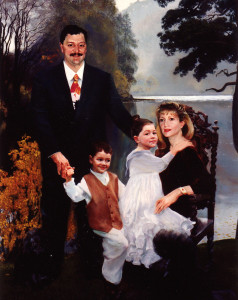
SPECIAL RECOGNITION
Prof. Wayne F. Yakes MD, FSIR, FCIRSE
Pursuit of Excellence
Frances Yakes knew she had exceptional children, and she committed her life to inspiring them both to achieve excellence. Her daughter was a Texas First Team All-State Volleyball selection from Incarnate Word High School and led her team to the state championship game in Houston, achieved a full scholarship as a pianist to North Texas State University, became interested in opera, attended Julliard receiving her BA and MA in Music, and became renowned as a Mezzosprano befriended by Leonard Bernstein. Lynnen performed a lead role in Bernstein’s last opera, “A Quiet Place”, which the world premiere performance was at the Vienna State Opera House. Her son, Dr. Wayne Yakes, worked hard in everything he pursued, from basketball to Interventional Radiology. Read More
Today, Dr. Yakes’ collection consists of contemporary paintings, drawings and sculpture. The art work is safely stored and guarded for archival preservation and many are loaned to museums and universities all over the world for exhibitions. A person who has pursued and achieved excellence throughout his life knows excellence when he sees it in whatever the endeavor. That’s how a basketball player, soldier and doctor has compiled an internationally respected collection of contemporary art from Russia, Japan, China, Egypt, Israel, Europe, Canada, and the USA.

